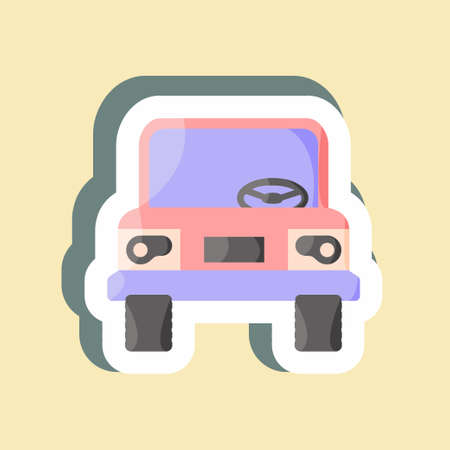The Unique Landscape of Indian Roads
When you step onto the streets of India, it’s impossible not to be swept into the vibrant energy that defines our cities and towns. From the bustling lanes of Mumbai to the narrow gullies of Old Delhi, Indian roads are a living mosaic of vehicles—two-wheelers weaving through traffic, auto-rickshaws waiting for their next passenger, and four-wheelers jostling for space alongside cyclists and pedestrians. This incredible diversity is not just a reflection of our culture, but also of our adaptability and resourcefulness. However, this very diversity creates unique challenges when it comes to road safety and traffic management. The behavior, speed, and maneuverability of a scooter are vastly different from those of an SUV or an auto-rickshaw. Recognising this reality, authorities in India have put in place separate rules tailored to each category: two-wheelers, three-wheelers, and four-wheelers. These rules are designed not only to keep traffic flowing smoothly, but also to ensure the safety of all road users amidst the daily hustle-bustle. Understanding these distinctions is crucial for anyone navigating Indian roads—whether you’re a daily commuter in Bengaluru or a visitor eager to explore Chennai’s bylanes.
2. Key Traffic Regulations for Two-Wheelers
In India, two-wheelers such as motorcycles and scooters are a primary mode of urban mobility, weaving through bustling city streets and narrow bylanes alike. To ensure the safety of riders and pedestrians, the government has implemented specific regulations tailored to address unique challenges faced by two-wheeler users. Understanding these rules is crucial for every rider in cities from Mumbai to Chennai.
Essential Rules Every Rider Must Follow
Two-wheeler drivers must adhere to strict safety protocols:
| Rule | Description |
|---|---|
| Helmet Mandate | Wearing BIS-certified helmets is compulsory for both the rider and pillion across most states. Non-compliance can lead to heavy fines and increased risk of head injuries. |
| Lane Discipline | Two-wheelers should stick to designated lanes, especially on highways and major arterial roads. Overtaking from the left or sudden lane changes are strictly prohibited and attract penalties. |
| Pillion Riding Rules | Only one pillion passenger is allowed, who must also wear a helmet. In some states like Tamil Nadu, children below a certain age are not permitted as pillion riders for safety reasons. |
Local Considerations
The enforcement of these rules may vary based on local urban environments and state-specific amendments. For instance, in Bengaluru’s CBD areas, traffic police are vigilant about helmet usage even for short trips. In Delhi NCR, pollution-related restrictions sometimes limit two-wheeler movement during high AQI days.
Eco-Friendly Riding Tips
Riders are encouraged to follow eco-friendly practices such as regular vehicle maintenance to reduce emissions, using fuel-efficient routes via local apps like Ola Maps, and turning off engines at long signals. By adopting these habits alongside traffic regulations, two-wheeler users contribute positively to urban air quality—a small but vital step towards greener Indian cities.

3. Three-Wheeler Drivers: Navigating the Galiways
Three-wheelers, fondly known as auto-rickshaws or tuk-tuks, are the lifeline of Indian urban and semi-urban mobility. For those steering these iconic yellow-and-green chariots, there are specific rules rooted deeply in both regulation and culture. First and foremost, all auto-rickshaw drivers must obtain a commercial driving licence along with a valid permit for their vehicle; these permits are strictly regulated by local transport authorities and often limited in number to control congestion and pollution.
Designated routes are another unique aspect for three-wheeler drivers. In bustling metros like Mumbai, Delhi, or Bengaluru, auto-rickshaws are restricted from entering certain high-traffic zones during peak hours or may be allowed only on select roads. This ensures smoother traffic flow and minimises chaos on arterial roads. Fares too are typically governed by state-fixed meters, though negotiation remains an art that’s as much a part of Indian street culture as chaiwallahs at every corner.
Culturally, the etiquette for auto drivers is distinct. Greeting passengers with a polite “Namaste” or responding to directions with “Ji” is common courtesy. Many auto drivers also display religious symbols or stickers reflecting their faith inside the vehicle—a subtle yet powerful reminder of India’s diversity. Importantly, drivers are expected to respect ‘no refusal’ zones—especially near railway stations and airports—where turning down passengers can result in fines or permit suspensions.
Understanding these rules and cultural nuances not only ensures legal compliance but also fosters mutual respect between drivers and commuters, keeping the spirit of Indian mobility alive amidst ever-changing cityscapes.
4. Four-Wheelers and Cars: Compliance and Conscious Driving
India’s ever-evolving urban landscape has seen a surge in four-wheelers, including cars, taxis, and SUVs. For responsible city driving, understanding the unique rules and cultural expectations is crucial—not just for personal safety but also for reducing environmental impact and ensuring smoother commutes for all.
Important Rules Every Four-Wheeler Driver Should Follow
| Rule/Regulation | Description & Local Nuances |
|---|---|
| Seat Belt Usage | Wearing seat belts is mandatory for drivers and all passengers (front and rear). Fines are imposed if caught without one—especially strict in metros like Mumbai and Bengaluru. |
| Honking Etiquette | While honking is often used liberally in Indian cities, unnecessary honking is discouraged. Many cities have “No Honking” zones near hospitals, schools, and residential areas. Respecting this not only reduces noise pollution but also aligns with Swachh Bharat Abhiyan’s spirit of mindful living. |
| Emission Standards | Vehicles must adhere to Bharat Stage (BS) emission norms, currently BS6. Annual pollution checks are required; failure to comply can result in fines or vehicle impoundment. Choosing CNG or electric vehicles is increasingly popular among eco-conscious urbanites. |
| Parking Regulations | Pavement and unauthorized roadside parking attract heavy penalties in cities like Delhi, Pune, and Hyderabad. With shrinking urban space, always use designated parking lots—even if it means a longer walk to your chai stop! |
Cultural Observations for Urban Four-Wheeler Drivers
- Traffic Jams: With rapid urbanisation, traffic snarls are common. Patience is key—avoid blocking junctions (“don’t jump the signal!”) and give way to emergency vehicles.
- Civic Sense: Avoid littering from car windows; keep reusable bags handy for waste until you find a dustbin—echoing India’s drive towards greener cities.
- Shared Spaces: Watch out for two-wheelers weaving through traffic or auto-rickshaws making sudden stops. Defensive driving ensures everyone’s safety on congested roads.
SUVs and Taxis: Special Considerations
SUV drivers should be extra vigilant about blind spots due to vehicle size, while taxi drivers must follow additional licensing rules (including regular health checks). Both categories often face stricter scrutiny from traffic police regarding passenger safety and fare compliance.
A Greener Path Forward
The future of Indian cities relies on conscious driving habits. Every compliant action—from proper parking to reducing horn use—helps shape cleaner, quieter, and more liveable urban spaces for all citizens.
5. Common Challenges and Penalties
Indian roads are a vibrant mix of two-wheelers, three-wheelers like auto-rickshaws, and four-wheelers ranging from compact cars to SUVs. With this diversity comes a unique set of challenges for each category of vehicle and their drivers. Despite clear rules, frequent violations are a daily reality—helmets ignored by bikers weaving through traffic, overloaded autos squeezing into narrow lanes, and car drivers jumping red lights or ignoring zebra crossings. These acts not only endanger lives but also strain the city’s eco-balance by causing unnecessary congestion and pollution.
Frequent Rule Violations
In cities like Mumbai, Delhi, and Bengaluru, it’s common to see two-wheeler riders skipping helmet use or three-wheeler drivers overloading passengers beyond legal limits. Four-wheeler drivers often park indiscriminately or neglect seatbelt laws. Such practices are not just minor oversights—they reflect a broader challenge in enforcing discipline on Indian roads.
Traffic Fines: An Evolving Landscape
The introduction of the Motor Vehicles Act, 2019 marked a turning point. Traffic fines have increased sharply: riding without a helmet can cost up to ₹1,000, while seatbelt violations for car drivers attract similar penalties. Overloading an auto-rickshaw can lead to both monetary fines and impoundment of the vehicle. The message is clear—authorities are serious about road safety and environmental sustainability.
Impact of Stricter Enforcement
Stricter enforcement has brought visible change in some urban areas. More riders now sport helmets; autos display passenger limit boards; car owners think twice before breaking parking norms. However, consistent implementation remains a challenge due to limited manpower and public resistance. For India’s cities striving for cleaner air and safer streets, adopting responsible driving habits is essential. The push towards stricter rules is not just about avoiding fines—it’s about nurturing safer, greener urban environments for all road users.
6. A Greener Traffic Culture: Encouraging Responsible Urban Mobility
India’s urban mobility landscape is evolving rapidly, and as our cities like Bengaluru, Delhi, and Pune grapple with congestion and pollution, the need for greener traffic habits becomes more urgent than ever. With distinct rules for 2, 3, and 4 wheeler drivers now in place, it’s an opportune moment to rethink not just how we drive, but how we contribute to a healthier city environment. Here are some ideas inspired by Indian cities’ efforts to promote eco-friendly driving and respect for pedestrian zones:
Eco-Friendly Driving Practices
Whether you’re zipping through traffic on a scooter or navigating city roads in your hatchback, small changes matter. Choose carpooling or ride-sharing whenever possible—initiatives like Bengaluru’s “Bus Day” have shown that even a single day of collective action can reduce emissions. Two-wheeler riders can switch off engines at long signals, while auto-rickshaw drivers can follow CNG conversion policies adopted in metros like Delhi for cleaner rides.
Respecting Pedestrian Zones
With separate rules aiming to streamline road use, respecting pedestrian-only areas is crucial. Cities such as Mumbai have experimented with dedicated walking streets on weekends, encouraging families to reclaim public spaces. Drivers of all vehicle types should observe no-honking zones near schools and hospitals, keep zebra crossings clear, and avoid parking in footpath areas—a step towards more inclusive urban movement.
Supporting Local Solutions
Community-driven solutions work best in India’s diverse cities. Join or support local resident welfare associations (RWAs) advocating for better cycling lanes or park-and-ride facilities. Participate in city-wide car-free days like those held in Gurugram to experience alternative mobility modes firsthand.
Towards Shared Responsibility
The new traffic rules for different vehicle types are not just about fines—they’re an invitation to build a culture of responsibility on our roads. By adopting green driving habits and championing respect for pedestrian zones, we can help create cities that are not only easier to move around in but also healthier places to live. Remember: every responsible choice behind the wheel (or handlebars) helps pave the way for a cleaner, more vibrant urban India.

